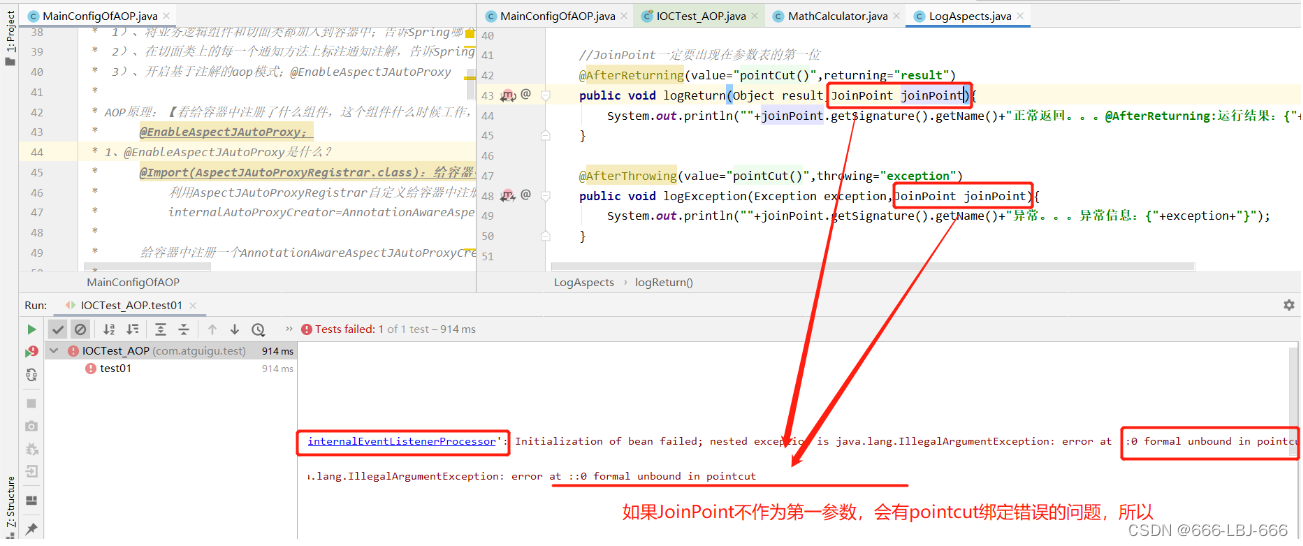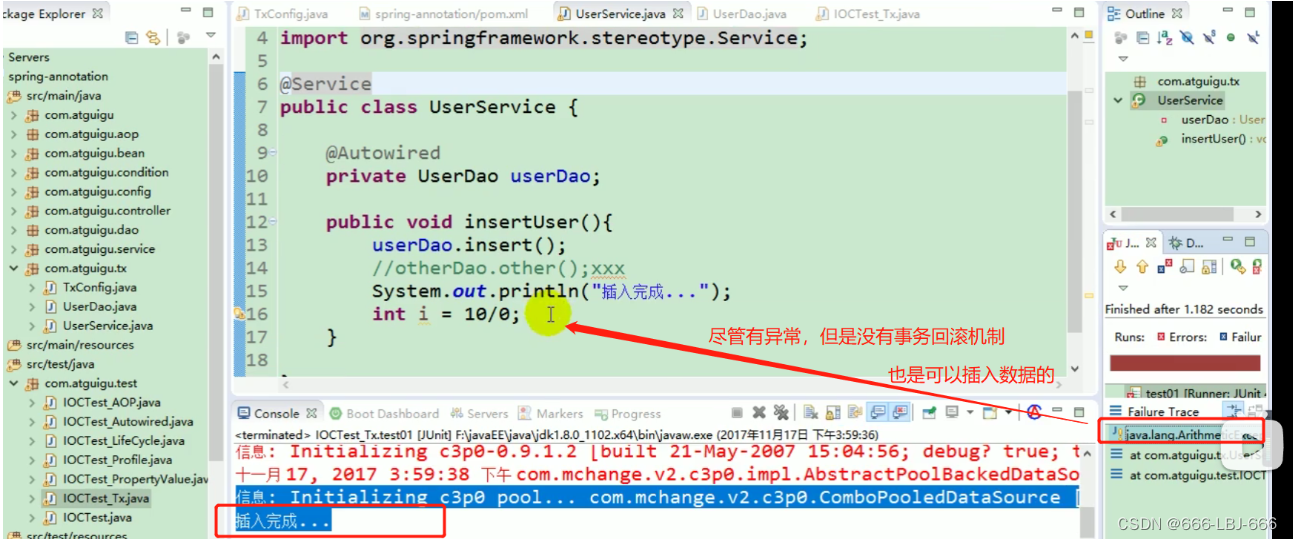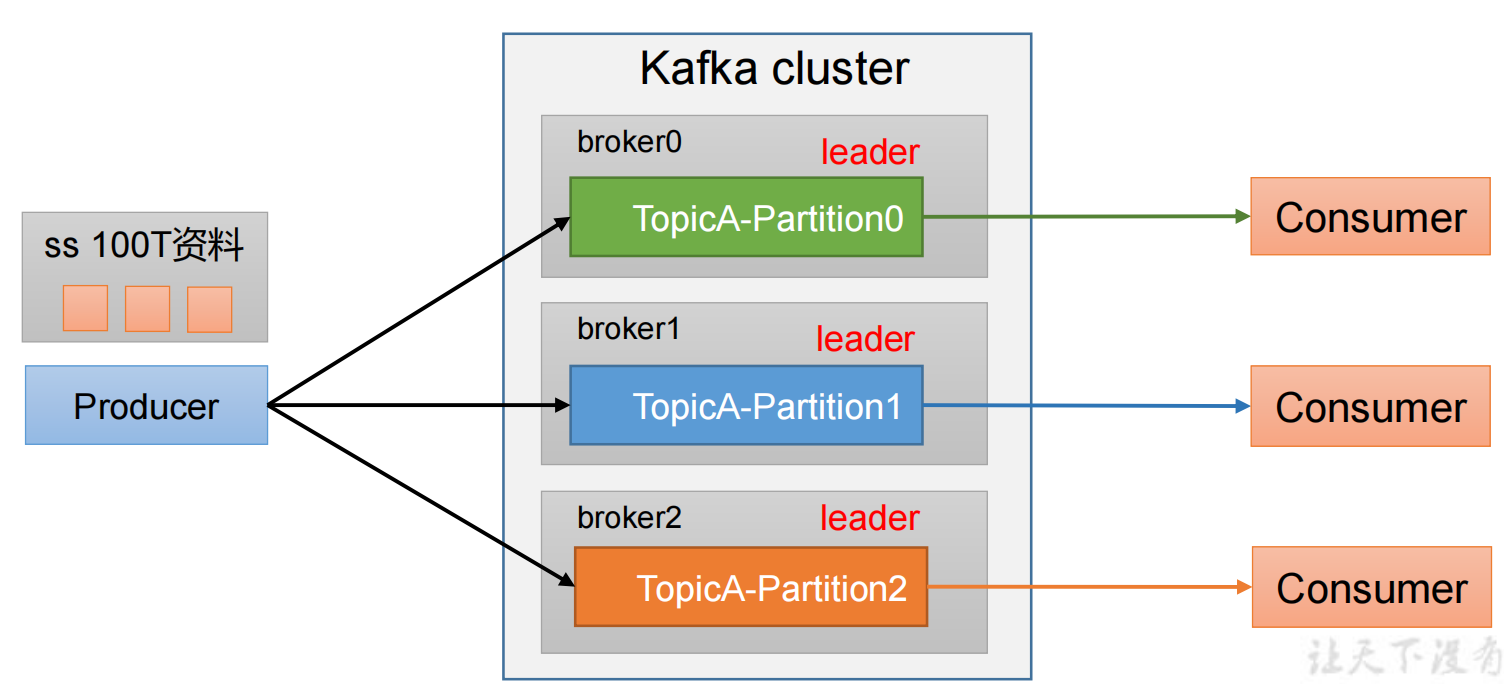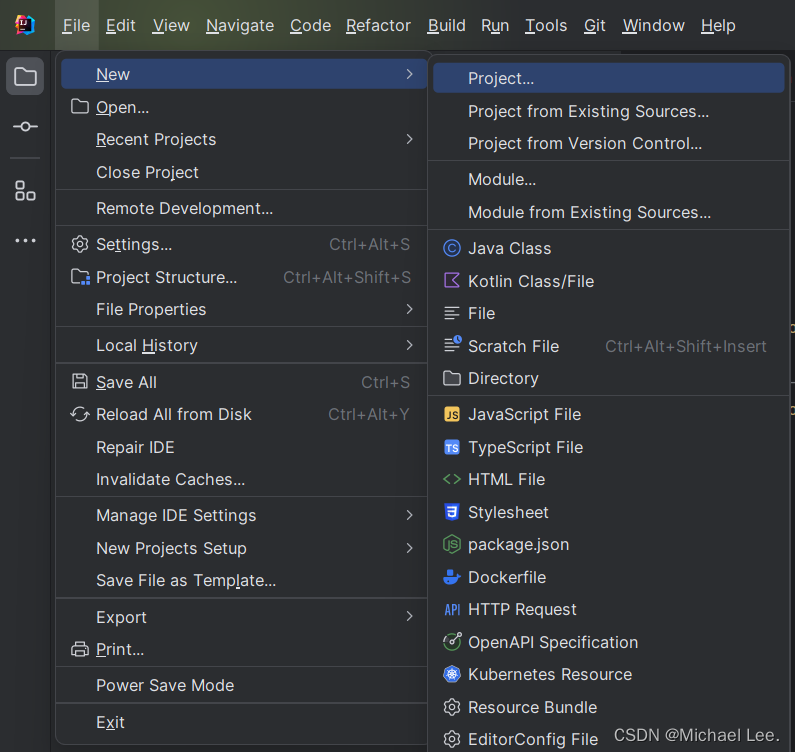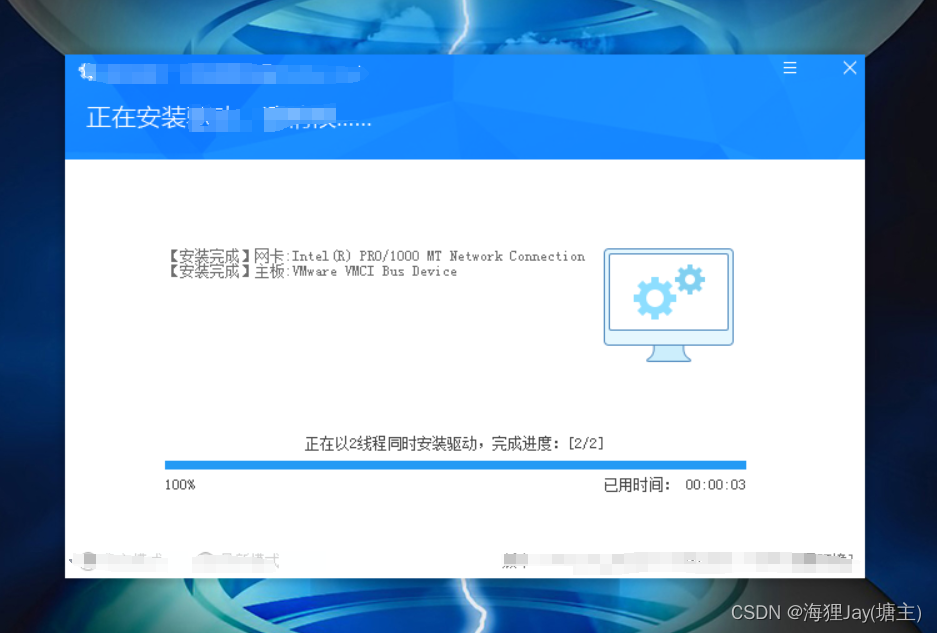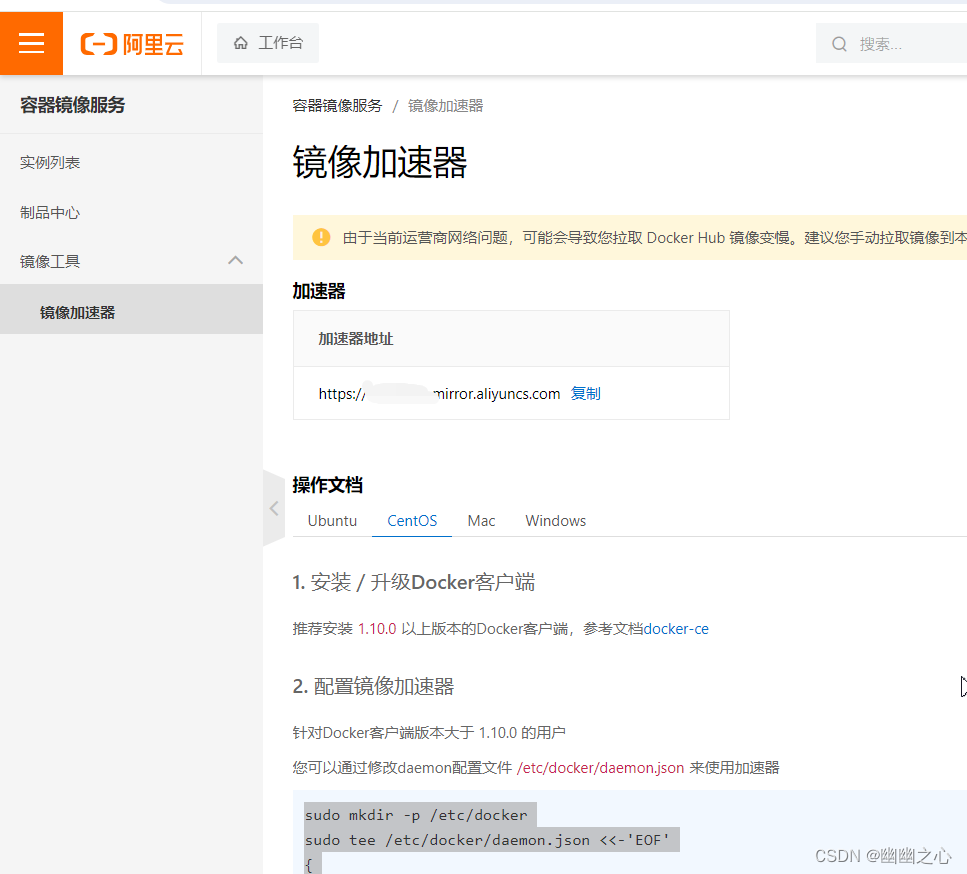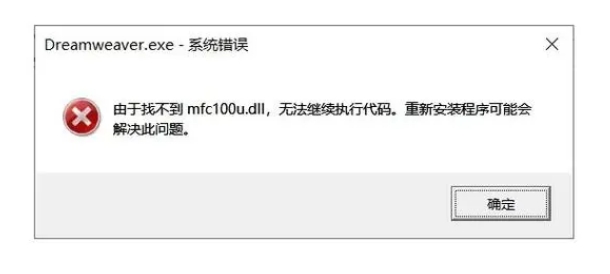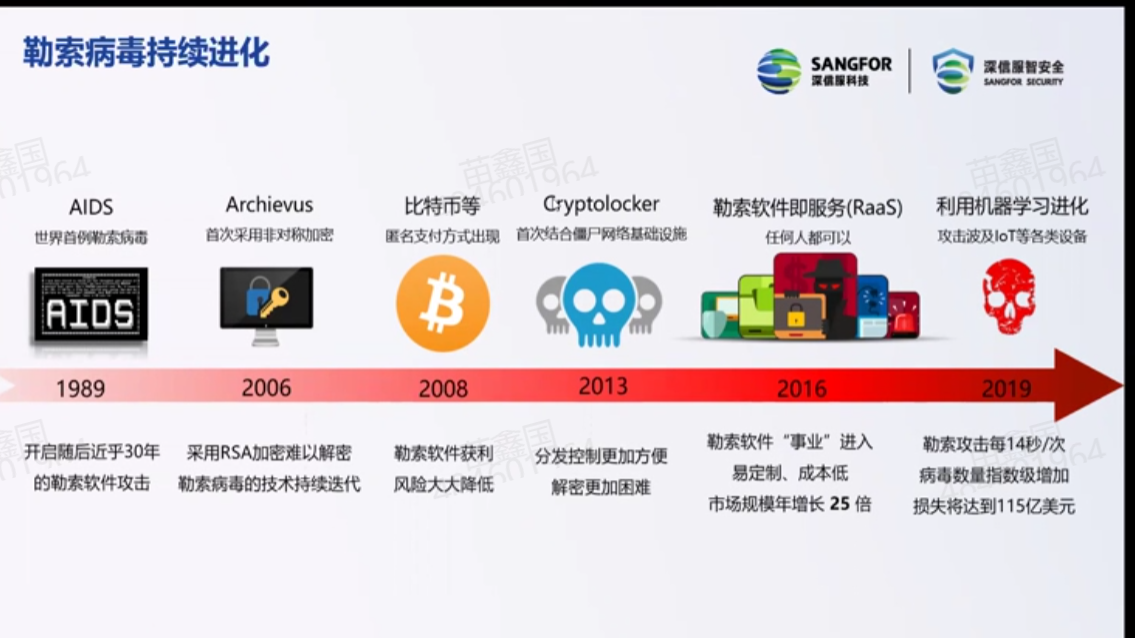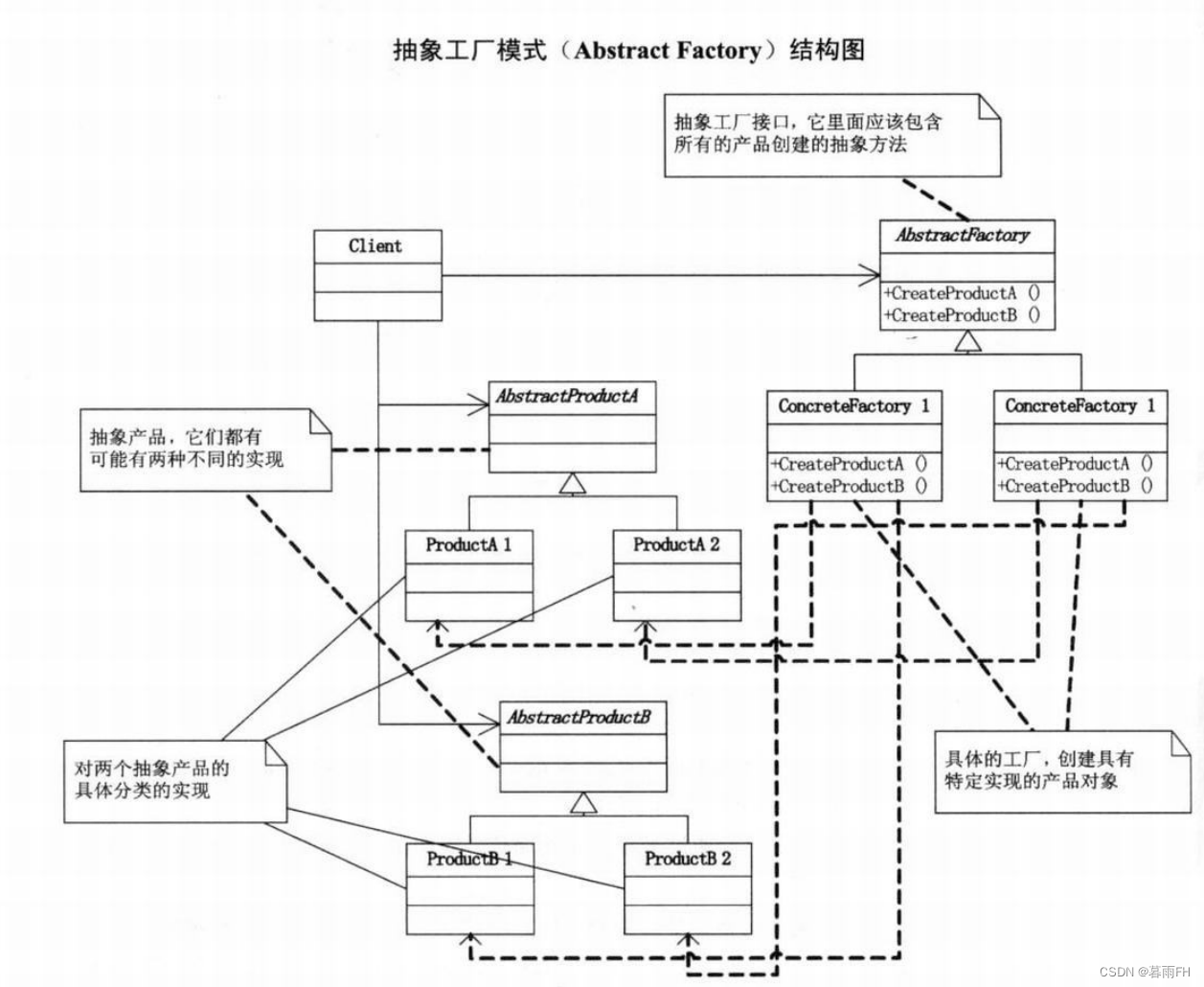从源码开始探究spring容器的创建原理,下面是源码总步骤
@Override
public void refresh() throws BeansException, IllegalStateException {
synchronized (this.startupShutdownMonitor) {
// Prepare this context for refreshing.
prepareRefresh();
// Tell the subclass to refresh the internal bean factory.
ConfigurableListableBeanFactory beanFactory = obtainFreshBeanFactory();
// Prepare the bean factory for use in this context.
prepareBeanFactory(beanFactory);
try {
// Allows post-processing of the bean factory in context subclasses.
postProcessBeanFactory(beanFactory);
// Invoke factory processors registered as beans in the context.
invokeBeanFactoryPostProcessors(beanFactory);
// Register bean processors that intercept bean creation.
registerBeanPostProcessors(beanFactory);
// Initialize message source for this context.
initMessageSource();
// Initialize event multicaster for this context.
initApplicationEventMulticaster();
// Initialize other special beans in specific context subclasses.
onRefresh();
// Check for listener beans and register them.
registerListeners();
// Instantiate all remaining (non-lazy-init) singletons.
finishBeanFactoryInitialization(beanFactory);
// Last step: publish corresponding event.
finishRefresh();
}
catch (BeansException ex) {
if (logger.isWarnEnabled()) {
logger.warn("Exception encountered during context initialization - " +
"cancelling refresh attempt: " + ex);
}
// Destroy already created singletons to avoid dangling resources.
destroyBeans();
// Reset 'active' flag.
cancelRefresh(ex);
// Propagate exception to caller.
throw ex;
}
finally {
// Reset common introspection caches in Spring's core, since we
// might not ever need metadata for singleton beans anymore...
resetCommonCaches();
}
}
}
一、spring容器的refresh()

 一、prepareRefresh()刷新前的预处理;
一、prepareRefresh()刷新前的预处理;

@Override
protected void prepareRefresh() {
this.scanner.clearCache();
super.prepareRefresh();
}
之后会进入AnnotationConfigReactiveWebServerApplicationContext的方法进行缓存的清空
然后会进入下面方法
protected void prepareRefresh() {
// Switch to active.
// 记录当前时间以及设置容器关闭以及激活状态
this.startupDate = System.currentTimeMillis();
this.closed.set(false);
this.active.set(true);
if (logger.isDebugEnabled()) {
if (logger.isTraceEnabled()) {
logger.trace("Refreshing " + this);
}
else {
logger.debug("Refreshing " + getDisplayName());
}
}
// Initialize any placeholder property sources in the context environment.
// 初始化一些属性设置;子类自定义个性化的属性设置方法;可以用于自己定义
initPropertySources();
// Validate that all properties marked as required are resolvable:
// see ConfigurablePropertyResolver#setRequiredProperties
// 检验属性的合法等
getEnvironment().validateRequiredProperties();
// Store pre-refresh ApplicationListeners...
// 保存容器中的一些早期的事件;到时可以使用时间派发器派发
if (this.earlyApplicationListeners == null) {
this.earlyApplicationListeners = new LinkedHashSet<>(this.applicationListeners);
}
else {
// Reset local application listeners to pre-refresh state.
this.applicationListeners.clear();
this.applicationListeners.addAll(this.earlyApplicationListeners);
}
// Allow for the collection of early ApplicationEvents,
// to be published once the multicaster is available...
this.earlyApplicationEvents = new LinkedHashSet<>();
}
总结:
1、initPropertySources()初始化一些属性设置;子类自定义个性化的属性设置方法;
2、getEnvironment().validateRequiredProperties();检验属性的合法等
3、earlyApplicationEvents= new LinkedHashSet<ApplicationEvent>();保存容器中的一些早期的事件;
二、obtainFreshBeanFactory():获取BeanFactory
其实从方法名字就可以看出,这个方法就是用于刷新和获取bean工厂的
protected ConfigurableListableBeanFactory obtainFreshBeanFactory() {
// 刷新bean工厂
refreshBeanFactory();
// 获取bean工厂
return getBeanFactory();
}
一、refreshBeanFactory:刷新bean工厂
这个方法主要就是创建了一个this.beanFactory = new DefaultListableBeanFactory();
设置id;
@Override protected final void refreshBeanFactory() throws IllegalStateException { if (!this.refreshed.compareAndSet(false, true)) { throw new IllegalStateException( "GenericApplicationContext does not support multiple refresh attempts: just call 'refresh' once"); } this.beanFactory.setSerializationId(getId()); }这里的beanFactory就是在创建GenericApplicationContext的时候创建了一个DefaultListableBeanFactory 的对象并赋给成员变量beanFactory
private final DefaultListableBeanFactory beanFactory;
二、getBeanFactory();返回刚才GenericApplicationContext创建的BeanFactory对象;
@Override
public final ConfigurableListableBeanFactory getBeanFactory() {
return this.beanFactory;
}
这一块没有什么好说的
三、prepareBeanFactory(beanFactory):BeanFactory的预准备工作
主要就是对BeanFactory进行一些属性设置
protected void prepareBeanFactory(ConfigurableListableBeanFactory beanFactory) {
// Tell the internal bean factory to use the context's class loader etc.
// 设置BeanFactory的类加载器、支持表达式解析器...
beanFactory.setBeanClassLoader(getClassLoader());
beanFactory.setBeanExpressionResolver(new StandardBeanExpressionResolver(beanFactory.getBeanClassLoader()));
beanFactory.addPropertyEditorRegistrar(new ResourceEditorRegistrar(this, getEnvironment()));
// Configure the bean factory with context callbacks.
//添加部分BeanPostProcessor【ApplicationContextAwareProcessor】后置处理器
beanFactory.addBeanPostProcessor(new ApplicationContextAwareProcessor(this));
// 设置忽略的自动装配的接口EnvironmentAware、EmbeddedValueResolverAware、也就是这些接口的实现类不能通过接口进行自动注入,需要手动注入
beanFactory.ignoreDependencyInterface(EnvironmentAware.class);
beanFactory.ignoreDependencyInterface(EmbeddedValueResolverAware.class);
beanFactory.ignoreDependencyInterface(ResourceLoaderAware.class);
beanFactory.ignoreDependencyInterface(ApplicationEventPublisherAware.class);
beanFactory.ignoreDependencyInterface(MessageSourceAware.class);
beanFactory.ignoreDependencyInterface(ApplicationContextAware.class);
// BeanFactory interface not registered as resolvable type in a plain factory.
// MessageSource registered (and found for autowiring) as a bean.
// 注册可以解析的自动装配;我们能直接在任何组件中自动注入,也就是使用@Autowired可以注入当前类进行使用
beanFactory.registerResolvableDependency(BeanFactory.class, beanFactory);
beanFactory.registerResolvableDependency(ResourceLoader.class, this);
beanFactory.registerResolvableDependency(ApplicationEventPublisher.class, this);
beanFactory.registerResolvableDependency(ApplicationContext.class, this);
// Register early post-processor for detecting inner beans as ApplicationListeners.
// 添加BeanPostProcessor后置处理器ApplicationListenerDetector
beanFactory.addBeanPostProcessor(new ApplicationListenerDetector(this));
// Detect a LoadTimeWeaver and prepare for weaving, if found.
// 添加编译时的AspectJ组件
if (beanFactory.containsBean(LOAD_TIME_WEAVER_BEAN_NAME)) {
beanFactory.addBeanPostProcessor(new LoadTimeWeaverAwareProcessor(beanFactory));
// Set a temporary ClassLoader for type matching.
beanFactory.setTempClassLoader(new ContextTypeMatchClassLoader(beanFactory.getBeanClassLoader()));
}
// Register default environment beans.
//给BeanFactory中注册一些能用的组件
if (!beanFactory.containsLocalBean(ENVIRONMENT_BEAN_NAME)) {
beanFactory.registerSingleton(ENVIRONMENT_BEAN_NAME, getEnvironment());
}
if (!beanFactory.containsLocalBean(SYSTEM_PROPERTIES_BEAN_NAME)) {
beanFactory.registerSingleton(SYSTEM_PROPERTIES_BEAN_NAME, getEnvironment().getSystemProperties());
}
if (!beanFactory.containsLocalBean(SYSTEM_ENVIRONMENT_BEAN_NAME)) {
beanFactory.registerSingleton(SYSTEM_ENVIRONMENT_BEAN_NAME, getEnvironment().getSystemEnvironment());
}
}
总结:
1、设置BeanFactory的类加载器、支持表达式解析器...
2、添加部分BeanPostProcessor【ApplicationContextAwareProcessor】
3、设置忽略的自动装配的接口EnvironmentAware、EmbeddedValueResolverAware、xxx;
4、注册可以解析的自动装配;我们能直接在任何组件中自动注入:
BeanFactory、ResourceLoader、ApplicationEventPublisher、ApplicationContext
5、添加BeanPostProcessor【ApplicationListenerDetector】
6、添加编译时的AspectJ;
7、给BeanFactory中注册一些能用的组件;
environment【ConfigurableEnvironment类型】、
systemProperties【Map<String, Object>类型】、
systemEnvironment【Map<String, Object>类型】到这一步就相当于bean工厂已经创建完了,该设置的属性也设置完了
四、postProcessBeanFactory(beanFactory)
BeanFactory准备工作完成后进行的后置处理工作,到这里BeanFactory的创建及预准备工作就完成了
进入这个方法可以看到,这是一个抽象类AbstractApplicationContext的一个空方法。子类通过重写这个方法来在BeanFactory创建并预准备完成以后做进一步的设置

五、invokeBeanFactoryPostProcessors(beanFactory);
BeanFactory创建完成后,就开始利用bean工厂创建各个组件了。invokeBeanFactoryPostProcessors执行BeanFactoryPostProcessor的方法。
BeanFactoryPostProcessor:BeanFactory的后置处理器。在BeanFactory标准初始化之后执行的;这个接口有两大接口:
BeanFactoryPostProcessor、BeanDefinitionRegistryPostProcessor
一、invokeBeanFactoryPostProcessors
protected void invokeBeanFactoryPostProcessors(ConfigurableListableBeanFactory beanFactory) {
// 执行invokeBeanFactoryPostProcessors方法
PostProcessorRegistrationDelegate.invokeBeanFactoryPostProcessors(beanFactory, getBeanFactoryPostProcessors());
// Detect a LoadTimeWeaver and prepare for weaving, if found in the meantime
// (e.g. through an @Bean method registered by ConfigurationClassPostProcessor)
if (beanFactory.getTempClassLoader() == null && beanFactory.containsBean(LOAD_TIME_WEAVER_BEAN_NAME)) {
beanFactory.addBeanPostProcessor(new LoadTimeWeaverAwareProcessor(beanFactory));
beanFactory.setTempClassLoader(new ContextTypeMatchClassLoader(beanFactory.getBeanClassLoader()));
}
}
二、invokeBeanFactoryPostProcessors方法源码
// 参数beanFactoryPostProcessors是执行 getBeanFactoryPostProcessors()获取到的
public static void invokeBeanFactoryPostProcessors(
ConfigurableListableBeanFactory beanFactory, List<BeanFactoryPostProcessor> beanFactoryPostProcessors) {
// Invoke BeanDefinitionRegistryPostProcessors first, if any.
Set<String> processedBeans = new HashSet<>();
// 判断beanFactory是否是BeanDefinitionRegistry,前面有创建一个DefaultListableBeanFactory 对象,这个是BeanDefinitionRegistry类型
if (beanFactory instanceof BeanDefinitionRegistry) {
BeanDefinitionRegistry registry = (BeanDefinitionRegistry) beanFactory;
List<BeanFactoryPostProcessor> regularPostProcessors = new ArrayList<>();
List<BeanDefinitionRegistryPostProcessor> registryProcessors = new ArrayList<>();
// 获取所有的BeanDefinitionRegistryPostProcessor的数据
for (BeanFactoryPostProcessor postProcessor : beanFactoryPostProcessors) {
if (postProcessor instanceof BeanDefinitionRegistryPostProcessor) {
BeanDefinitionRegistryPostProcessor registryProcessor =
(BeanDefinitionRegistryPostProcessor) postProcessor;
registryProcessor.postProcessBeanDefinitionRegistry(registry);
registryProcessors.add(registryProcessor);
}
else {
regularPostProcessors.add(postProcessor);
}
}
// Do not initialize FactoryBeans here: We need to leave all regular beans
// uninitialized to let the bean factory post-processors apply to them!
// Separate between BeanDefinitionRegistryPostProcessors that implement
// PriorityOrdered, Ordered, and the rest.
List<BeanDefinitionRegistryPostProcessor> currentRegistryProcessors = new ArrayList<>();
// First, invoke the BeanDefinitionRegistryPostProcessors that implement PriorityOrdered.
String[] postProcessorNames =
beanFactory.getBeanNamesForType(BeanDefinitionRegistryPostProcessor.class, true, false);
// 先执行实现了PriorityOrdered优先级接口BeanDefinitionRegistryPostProcessor的
// postProcessor.postProcessBeanDefinitionRegistry(registry)方法
for (String ppName : postProcessorNames) {
if (beanFactory.isTypeMatch(ppName, PriorityOrdered.class)) {
currentRegistryProcessors.add(beanFactory.getBean(ppName, BeanDefinitionRegistryPostProcessor.class));
processedBeans.add(ppName);
}
}
sortPostProcessors(currentRegistryProcessors, beanFactory);
registryProcessors.addAll(currentRegistryProcessors);
// 在这里执行的
invokeBeanDefinitionRegistryPostProcessors(currentRegistryProcessors, registry);
currentRegistryProcessors.clear();
// Next, invoke the BeanDefinitionRegistryPostProcessors that implement Ordered.
// 再执行实现了Ordered顺序接口的BeanDefinitionRegistryPostProcessor
postProcessorNames = beanFactory.getBeanNamesForType(BeanDefinitionRegistryPostProcessor.class, true, false);
for (String ppName : postProcessorNames) {
if (!processedBeans.contains(ppName) && beanFactory.isTypeMatch(ppName, Ordered.class)) {
currentRegistryProcessors.add(beanFactory.getBean(ppName, BeanDefinitionRegistryPostProcessor.class));
processedBeans.add(ppName);
}
}
sortPostProcessors(currentRegistryProcessors, beanFactory);
registryProcessors.addAll(currentRegistryProcessors);
// 是在这里执行的postProcessor.postProcessBeanDefinitionRegistry(registry)
invokeBeanDefinitionRegistryPostProcessors(currentRegistryProcessors, registry);
currentRegistryProcessors.clear();
// Finally, invoke all other BeanDefinitionRegistryPostProcessors until no further ones appear.
// 最后执行没有实现任何优先级或者是顺序接口的BeanDefinitionRegistryPostProcessors
boolean reiterate = true;
while (reiterate) {
reiterate = false;
postProcessorNames = beanFactory.getBeanNamesForType(BeanDefinitionRegistryPostProcessor.class, true, false);
for (String ppName : postProcessorNames) {
if (!processedBeans.contains(ppName)) {
currentRegistryProcessors.add(beanFactory.getBean(ppName, BeanDefinitionRegistryPostProcessor.class));
processedBeans.add(ppName);
reiterate = true;
}
}
sortPostProcessors(currentRegistryProcessors, beanFactory);
registryProcessors.addAll(currentRegistryProcessors);
invokeBeanDefinitionRegistryPostProcessors(currentRegistryProcessors, registry);
currentRegistryProcessors.clear();
}
// Now, invoke the postProcessBeanFactory callback of all processors handled so far.
// 在这里执行的postProcessor.postProcessBeanDefinitionRegistry(registry)
invokeBeanFactoryPostProcessors(registryProcessors, beanFactory);
invokeBeanFactoryPostProcessors(regularPostProcessors, beanFactory);
}
else {
// Invoke factory processors registered with the context instance.
invokeBeanFactoryPostProcessors(beanFactoryPostProcessors, beanFactory);
}
// 以上是先执行BeanDefinitionRegistryPostProcessor类相关的操作,以下是执行BeanFactoryPostProcessor相关类的操作
// Do not initialize FactoryBeans here: We need to leave all regular beans
// uninitialized to let the bean factory post-processors apply to them!
// 通过beanFactory工厂按照类型BeanFactoryPostProcessor获取所有这个类型的bean名字
String[] postProcessorNames =
beanFactory.getBeanNamesForType(BeanFactoryPostProcessor.class, true, false);
// Separate between BeanFactoryPostProcessors that implement PriorityOrdered,
// Ordered, and the rest.
List<BeanFactoryPostProcessor> priorityOrderedPostProcessors = new ArrayList<>();
List<String> orderedPostProcessorNames = new ArrayList<>();
List<String> nonOrderedPostProcessorNames = new ArrayList<>();
for (String ppName : postProcessorNames) {
if (processedBeans.contains(ppName)) {
// skip - already processed in first phase above
}
// 如果实现了PriorityOrdered,优先执行,其次是Ordered,最后是所有,和上面一样
else if (beanFactory.isTypeMatch(ppName, PriorityOrdered.class)) {
priorityOrderedPostProcessors.add(beanFactory.getBean(ppName, BeanFactoryPostProcessor.class));
}
else if (beanFactory.isTypeMatch(ppName, Ordered.class)) {
orderedPostProcessorNames.add(ppName);
}
else {
nonOrderedPostProcessorNames.add(ppName);
}
}
// First, invoke the BeanFactoryPostProcessors that implement PriorityOrdered.
sortPostProcessors(priorityOrderedPostProcessors, beanFactory);
invokeBeanFactoryPostProcessors(priorityOrderedPostProcessors, beanFactory);
// Next, invoke the BeanFactoryPostProcessors that implement Ordered.
List<BeanFactoryPostProcessor> orderedPostProcessors = new ArrayList<>();
for (String postProcessorName : orderedPostProcessorNames) {
orderedPostProcessors.add(beanFactory.getBean(postProcessorName, BeanFactoryPostProcessor.class));
}
sortPostProcessors(orderedPostProcessors, beanFactory);
invokeBeanFactoryPostProcessors(orderedPostProcessors, beanFactory);
// Finally, invoke all other BeanFactoryPostProcessors.
List<BeanFactoryPostProcessor> nonOrderedPostProcessors = new ArrayList<>();
for (String postProcessorName : nonOrderedPostProcessorNames) {
nonOrderedPostProcessors.add(beanFactory.getBean(postProcessorName, BeanFactoryPostProcessor.class));
}
invokeBeanFactoryPostProcessors(nonOrderedPostProcessors, beanFactory);
// Clear cached merged bean definitions since the post-processors might have
// modified the original metadata, e.g. replacing placeholders in values...
beanFactory.clearMetadataCache();
}三、invokeBeanFactoryPostProcessors方法,执行postProcessBeanFactory
private static void invokeBeanFactoryPostProcessors(
Collection<? extends BeanFactoryPostProcessor> postProcessors, ConfigurableListableBeanFactory beanFactory) {
for (BeanFactoryPostProcessor postProcessor : postProcessors) {
postProcessor.postProcessBeanFactory(beanFactory);
}
}总结:
BeanFactoryPostProcessor:BeanFactory的后置处理器。在BeanFactory标准初始化之后执行的;
两个接口:BeanFactoryPostProcessor、BeanDefinitionRegistryPostProcessor
1、执行BeanFactoryPostProcessor的方法前先执行BeanDefinitionRegistryPostProcessor
1)、获取所有的BeanDefinitionRegistryPostProcessor;
2)、看先执行实现了PriorityOrdered优先级接口的BeanDefinitionRegistryPostProcessor、
postProcessor.postProcessBeanDefinitionRegistry(registry)
3)、在执行实现了Ordered顺序接口的BeanDefinitionRegistryPostProcessor;
postProcessor.postProcessBeanDefinitionRegistry(registry)
4)、最后执行没有实现任何优先级或者是顺序接口的BeanDefinitionRegistryPostProcessors;
postProcessor.postProcessBeanDefinitionRegistry(registry)
2、再执行BeanFactoryPostProcessor的方法
1)、获取所有的BeanFactoryPostProcessor
2)、看先执行实现了PriorityOrdered优先级接口的BeanFactoryPostProcessor、
postProcessor.postProcessBeanFactory()
3)、在执行实现了Ordered顺序接口的BeanFactoryPostProcessor;
postProcessor.postProcessBeanFactory()
4)、最后执行没有实现任何优先级或者是顺序接口的BeanFactoryPostProcessor;
postProcessor.postProcessBeanFactory()
六、registerBeanPostProcessors(beanFactory);
注册BeanPostProcessor(Bean的后置处理器),上面的是BeanFactoryPostProcessor和BeanDefinitionRegistryPostProcessor(继承至BeanFactoryPostProcessor),先是bean工厂后置处理器执行,然后才会有bean后置处理器执行。
不同接口类型的BeanPostProcessor;在Bean创建前后的执行时机是不一样的。
1、BeanPostProcessor:下面接口都是继承他
2、DestructionAwareBeanPostProcessor:执行bean销毁方法的后置处理器
3、InstantiationAwareBeanPostProcessor:(1) 实例化---调用构造函数创建bean:InstantiationAwareBeanPostProcessor在bean的实例化前后执行
(2)初始化---调用set方法,给属性赋值
4、SmartInstantiationAwareBeanPostProcessor:继承了InstantiationAwareBeanPostProcessor,调用时机一致
5、MergedBeanDefinitionPostProcessor(1)、快速获取bean的所有指定信息。
(2)清理缓存中bean的指定信息。(3)bean生命周期中创建实例化对象后,赋值方法前执行
一、registerBeanPostProcessors
protected void registerBeanPostProcessors(ConfigurableListableBeanFactory beanFactory) {
PostProcessorRegistrationDelegate.registerBeanPostProcessors(beanFactory, this);
}二、PostProcessorRegistrationDelegate.registerBeanPostProcessors(beanFactory, this);
public static void registerBeanPostProcessors(
ConfigurableListableBeanFactory beanFactory, AbstractApplicationContext applicationContext) {
// 通过bean工厂按BeanPostProcessor类型获取所有符合条件的bean名字
String[] postProcessorNames = beanFactory.getBeanNamesForType(BeanPostProcessor.class, true, false);
// Register BeanPostProcessorChecker that logs an info message when
// a bean is created during BeanPostProcessor instantiation, i.e. when
// a bean is not eligible for getting processed by all BeanPostProcessors.
int beanProcessorTargetCount = beanFactory.getBeanPostProcessorCount() + 1 + postProcessorNames.length;
beanFactory.addBeanPostProcessor(new BeanPostProcessorChecker(beanFactory, beanProcessorTargetCount));
// Separate between BeanPostProcessors that implement PriorityOrdered,
// Ordered, and the rest.
List<BeanPostProcessor> priorityOrderedPostProcessors = new ArrayList<>();
List<BeanPostProcessor> internalPostProcessors = new ArrayList<>();
List<String> orderedPostProcessorNames = new ArrayList<>();
List<String> nonOrderedPostProcessorNames = new ArrayList<>();
// 后置处理器都默认可以通过PriorityOrdered、Ordered接口来执行优先级
for (String ppName : postProcessorNames) {
if (beanFactory.isTypeMatch(ppName, PriorityOrdered.class)) {
BeanPostProcessor pp = beanFactory.getBean(ppName, BeanPostProcessor.class);
priorityOrderedPostProcessors.add(pp);
if (pp instanceof MergedBeanDefinitionPostProcessor) {
internalPostProcessors.add(pp);
}
}
else if (beanFactory.isTypeMatch(ppName, Ordered.class)) {
orderedPostProcessorNames.add(ppName);
}
else {
nonOrderedPostProcessorNames.add(ppName);
}
}
// First, register the BeanPostProcessors that implement PriorityOrdered.
sortPostProcessors(priorityOrderedPostProcessors, beanFactory);
//先注册PriorityOrdered优先级接口的BeanPostProcessor;把每一个BeanPostProcessor;添加到BeanFactory中
registerBeanPostProcessors(beanFactory, priorityOrderedPostProcessors);
// Next, register the BeanPostProcessors that implement Ordered.
List<BeanPostProcessor> orderedPostProcessors = new ArrayList<>();
for (String ppName : orderedPostProcessorNames) {
BeanPostProcessor pp = beanFactory.getBean(ppName, BeanPostProcessor.class);
orderedPostProcessors.add(pp);
if (pp instanceof MergedBeanDefinitionPostProcessor) {
internalPostProcessors.add(pp);
}
}
sortPostProcessors(orderedPostProcessors, beanFactory);
// 再注册Ordered接口的
registerBeanPostProcessors(beanFactory, orderedPostProcessors);
// Now, register all regular BeanPostProcessors.
List<BeanPostProcessor> nonOrderedPostProcessors = new ArrayList<>();
for (String ppName : nonOrderedPostProcessorNames) {
BeanPostProcessor pp = beanFactory.getBean(ppName, BeanPostProcessor.class);
nonOrderedPostProcessors.add(pp);
if (pp instanceof MergedBeanDefinitionPostProcessor) {
internalPostProcessors.add(pp);
}
}
// 最后注册没有实现任何优先级接口的
registerBeanPostProcessors(beanFactory, nonOrderedPostProcessors);
// 最终注册MergedBeanDefinitionPostProcessor;internalPostProcessors集合里面的就是MergedBeanDefinitionPostProcessor数据
// Finally, re-register all internal BeanPostProcessors.
sortPostProcessors(internalPostProcessors, beanFactory);
registerBeanPostProcessors(beanFactory, internalPostProcessors);
// 注册一个ApplicationListenerDetector;来在Bean创建完成后检查是否是监听器,如果是添加进行容器中
// 这里的逻辑是在ApplicationListenerDetector对象创建之后会调用ApplicationListenerDetector对象里面的postProcessAfterInitialization执行的
// Re-register post-processor for detecting inner beans as ApplicationListeners,
// moving it to the end of the processor chain (for picking up proxies etc).
beanFactory.addBeanPostProcessor(new ApplicationListenerDetector(applicationContext));
}总结:
1、获取所有的 BeanPostProcessor;后置处理器都默认可以通过PriorityOrdered、Ordered接口来执行优先级
2、先注册PriorityOrdered优先级接口的BeanPostProcessor; 把每一个BeanPostProcessor;添加到BeanFactory中,beanFactory.addBeanPostProcessor(postProcessor);
3、再注册Ordered接口的
4、最后注册没有实现任何优先级接口的
5、最终注册MergedBeanDefinitionPostProcessor;
6、注册一个ApplicationListenerDetector;来在Bean创建完成后检查是否是ApplicationListener,如果是新增事件监听器applicationContext.addApplicationListener((ApplicationListener<?>) bean);
七、initMessageSource();
初始化MessageSource组件,主要是做国际化功能;消息绑定,消息解析
protected void initMessageSource() {
// 获取容器工厂BeanFactory
ConfigurableListableBeanFactory beanFactory = getBeanFactory();
// 看容器中是否有id为messageSource的,类型是MessageSource的组件,如果有赋值给messageSource
if (beanFactory.containsLocalBean(MESSAGE_SOURCE_BEAN_NAME)) {
// MessageSource:取出国际化配置文件中的某个key的值;能按照区域信息获取;
this.messageSource = beanFactory.getBean(MESSAGE_SOURCE_BEAN_NAME, MessageSource.class);
// Make MessageSource aware of parent MessageSource.
if (this.parent != null && this.messageSource instanceof HierarchicalMessageSource) {
HierarchicalMessageSource hms = (HierarchicalMessageSource) this.messageSource;
if (hms.getParentMessageSource() == null) {
// Only set parent context as parent MessageSource if no parent MessageSource
// registered already.
hms.setParentMessageSource(getInternalParentMessageSource());
}
}
if (logger.isTraceEnabled()) {
logger.trace("Using MessageSource [" + this.messageSource + "]");
}
}
// 如果没有自己创建一个DelegatingMessageSource
else {
// Use empty MessageSource to be able to accept getMessage calls.
DelegatingMessageSource dms = new DelegatingMessageSource();
dms.setParentMessageSource(getInternalParentMessageSource());
this.messageSource = dms;
// 把创建好的MessageSource注册在容器中,以后获取国际化配置文件的值的时候,可以自动注入MessageSource
beanFactory.registerSingleton(MESSAGE_SOURCE_BEAN_NAME, this.messageSource);
if (logger.isTraceEnabled()) {
logger.trace("No '" + MESSAGE_SOURCE_BEAN_NAME + "' bean, using [" + this.messageSource + "]");
}
}
}
总结:
1、获取BeanFactory
2、看容器中是否有id为messageSource的,类型是MessageSource的组件
如果有赋值给messageSource,如果没有自己创建一个DelegatingMessageSource;
MessageSource:取出国际化配置文件中的某个key的值;能按照区域信息获取;
3、把创建好的MessageSource注册在容器中,以后获取国际化配置文件的值的时候,可以自动注入MessageSource;
beanFactory.registerSingleton(MESSAGE_SOURCE_BEAN_NAME,this.messageSource);
八、initApplicationEventMulticaster();
初始化事件派发器,具体之前文章有记录,可查阅。
protected void initApplicationEventMulticaster() {
ConfigurableListableBeanFactory beanFactory = getBeanFactory();
if (beanFactory.containsLocalBean(APPLICATION_EVENT_MULTICASTER_BEAN_NAME)) {
this.applicationEventMulticaster =
beanFactory.getBean(APPLICATION_EVENT_MULTICASTER_BEAN_NAME, ApplicationEventMulticaster.class);
if (logger.isTraceEnabled()) {
logger.trace("Using ApplicationEventMulticaster [" + this.applicationEventMulticaster + "]");
}
}
else {
this.applicationEventMulticaster = new SimpleApplicationEventMulticaster(beanFactory);
beanFactory.registerSingleton(APPLICATION_EVENT_MULTICASTER_BEAN_NAME, this.applicationEventMulticaster);
if (logger.isTraceEnabled()) {
logger.trace("No '" + APPLICATION_EVENT_MULTICASTER_BEAN_NAME + "' bean, using " +
"[" + this.applicationEventMulticaster.getClass().getSimpleName() + "]");
}
}
}
总结:
1、获取BeanFactory
2、从BeanFactory中获取applicationEventMulticaster的ApplicationEventMulticaster;
3、如果上一步没有配置;创建一个SimpleApplicationEventMulticaster
4、将创建的ApplicationEventMulticaster添加到BeanFactory中,以后其他组件直接自动注入
九、onRefresh();
主要是留给子容器(子类),子类重写这个方法,在容器刷新的时候可以自定义逻辑
protected void onRefresh() throws BeansException {
// For subclasses: do nothing by default.
}十、registerListeners();
主要是给容器中将所有项目里面的ApplicationListener注册进来
protected void registerListeners() {
// Register statically specified listeners first.
// 拿到之前的监听器,填加到事件派发其中
for (ApplicationListener<?> listener : getApplicationListeners()) {
getApplicationEventMulticaster().addApplicationListener(listener);
}
// Do not initialize FactoryBeans here: We need to leave all regular beans
// uninitialized to let post-processors apply to them!
// 从容器中拿到所有的ApplicationListener
String[] listenerBeanNames = getBeanNamesForType(ApplicationListener.class, true, false);
for (String listenerBeanName : listenerBeanNames) {
// 将每个监听器添加到事件派发器中;
getApplicationEventMulticaster().addApplicationListenerBean(listenerBeanName);
}
// Publish early application events now that we finally have a multicaster...
Set<ApplicationEvent> earlyEventsToProcess = this.earlyApplicationEvents;
this.earlyApplicationEvents = null;
if (earlyEventsToProcess != null) {
// 派发之前步骤产生的事件
for (ApplicationEvent earlyEvent : earlyEventsToProcess) {
getApplicationEventMulticaster().multicastEvent(earlyEvent);
}
}
}总结:
1、从容器中拿到所有的ApplicationListener
2、将每个监听器添加到事件派发器中;
getApplicationEventMulticaster().addApplicationListenerBean(listenerBeanName);
3、派发之前步骤产生的事件;
十一、finishBeanFactoryInitialization(beanFactory);
主要是初始化所有剩下的单实例bean
一、 finishBeanFactoryInitialization(ConfigurableListableBeanFactory beanFactory)方法
protected void finishBeanFactoryInitialization(ConfigurableListableBeanFactory beanFactory) {
// Initialize conversion service for this context.
// 初始化类型转换组件
if (beanFactory.containsBean(CONVERSION_SERVICE_BEAN_NAME) &&
beanFactory.isTypeMatch(CONVERSION_SERVICE_BEAN_NAME, ConversionService.class)) {
beanFactory.setConversionService(
beanFactory.getBean(CONVERSION_SERVICE_BEAN_NAME, ConversionService.class));
}
// Register a default embedded value resolver if no bean post-processor
// (such as a PropertyPlaceholderConfigurer bean) registered any before:
// at this point, primarily for resolution in annotation attribute values.
// 添加值解析器
if (!beanFactory.hasEmbeddedValueResolver()) {
beanFactory.addEmbeddedValueResolver(strVal -> getEnvironment().resolvePlaceholders(strVal));
}
// Initialize LoadTimeWeaverAware beans early to allow for registering their transformers early.
// 与aspectj相关
String[] weaverAwareNames = beanFactory.getBeanNamesForType(LoadTimeWeaverAware.class, false, false);
for (String weaverAwareName : weaverAwareNames) {
getBean(weaverAwareName);
}
// Stop using the temporary ClassLoader for type matching.
beanFactory.setTempClassLoader(null);
// Allow for caching all bean definition metadata, not expecting further changes.
beanFactory.freezeConfiguration();
// Instantiate all remaining (non-lazy-init) singletons.
// 主要是这一步,初始化剩下的单实例bean
beanFactory.preInstantiateSingletons();
}
二、preInstantiateSingletons():初始化剩下的单实例bean
@Override
public void preInstantiateSingletons() throws BeansException {
if (logger.isTraceEnabled()) {
logger.trace("Pre-instantiating singletons in " + this);
}
// Iterate over a copy to allow for init methods which in turn register new bean definitions.
// While this may not be part of the regular factory bootstrap, it does otherwise work fine.
// 获取容器中的所有Bean,依次进行初始化和创建对象,this.beanDefinitionNames里面有所有的bean信息
List<String> beanNames = new ArrayList<>(this.beanDefinitionNames);
// Trigger initialization of all non-lazy singleton beans...
for (String beanName : beanNames) {
// 获取Bean的定义信息;RootBeanDefinition
RootBeanDefinition bd = getMergedLocalBeanDefinition(beanName);
// 如果Bean不是抽象的,是单实例的,不是懒加载
if (!bd.isAbstract() && bd.isSingleton() && !bd.isLazyInit()) {
// 判断是否是FactoryBean;是否是实现FactoryBean接口的Bean
if (isFactoryBean(beanName)) {
// 是工厂Bean。利用getBean(FACTORY_BEAN_PREFIX + beanName);创建对象
Object bean = getBean(FACTORY_BEAN_PREFIX + beanName);
if (bean instanceof FactoryBean) {
final FactoryBean<?> factory = (FactoryBean<?>) bean;
boolean isEagerInit;
if (System.getSecurityManager() != null && factory instanceof SmartFactoryBean) {
isEagerInit = AccessController.doPrivileged((PrivilegedAction<Boolean>)
((SmartFactoryBean<?>) factory)::isEagerInit,
getAccessControlContext());
}
else {
isEagerInit = (factory instanceof SmartFactoryBean &&
((SmartFactoryBean<?>) factory).isEagerInit());
}
if (isEagerInit) {
getBean(beanName);
}
}
}
else {
// 不是工厂Bean。利用getBean(beanName);创建对象
getBean(beanName);
}
}
}
// Trigger post-initialization callback for all applicable beans...
// 所有Bean都利用getBean创建完成以后;
检查所有的Bean是否是SmartInitializingSingleton接口的;如果是;就执行afterSingletonsInstantiated();
for (String beanName : beanNames) {
Object singletonInstance = getSingleton(beanName);
if (singletonInstance instanceof SmartInitializingSingleton) {
final SmartInitializingSingleton smartSingleton = (SmartInitializingSingleton) singletonInstance;
if (System.getSecurityManager() != null) {
AccessController.doPrivileged((PrivilegedAction<Object>) () -> {
smartSingleton.afterSingletonsInstantiated();
return null;
}, getAccessControlContext());
}
else {
smartSingleton.afterSingletonsInstantiated();
}
}
}
}三、getBean(String name)
主要就是调用doGetBean方法
@Override
public Object getBean(String name) throws BeansException {
return doGetBean(name, null, null, false);
}
四、doGetBean(name, null, null, false);
protected <T> T doGetBean(final String name, @Nullable final Class<T> requiredType,
@Nullable final Object[] args, boolean typeCheckOnly) throws BeansException {
// 先获取名字
final String beanName = transformedBeanName(name);
Object bean;
// Eagerly check singleton cache for manually registered singletons.
// 先获取缓存中保存的单实例Bean。如果能获取到说明这个Bean之前被创建过(所有创建过的单实例Bean都会被缓存起来),主要是先从一级缓存中获取,一级缓存没有就从二级缓存
//二级缓存没有就从三级缓存中获取,具体逻辑可以看下面的 getSingleton(beanName)源码
Object sharedInstance = getSingleton(beanName);
if (sharedInstance != null && args == null) {
if (logger.isTraceEnabled()) {
if (isSingletonCurrentlyInCreation(beanName)) {
logger.trace("Returning eagerly cached instance of singleton bean '" + beanName +
"' that is not fully initialized yet - a consequence of a circular reference");
}
else {
logger.trace("Returning cached instance of singleton bean '" + beanName + "'");
}
}
bean = getObjectForBeanInstance(sharedInstance, name, beanName, null);
}
// 第一次缓存都是没有的,缓存中获取不到,开始Bean的创建对象流程
else {
// Fail if we're already creating this bean instance:
// We're assumably within a circular reference.
if (isPrototypeCurrentlyInCreation(beanName)) {
throw new BeanCurrentlyInCreationException(beanName);
}
// Check if bean definition exists in this factory.
// 校验是否有父工厂
BeanFactory parentBeanFactory = getParentBeanFactory();
if (parentBeanFactory != null && !containsBeanDefinition(beanName)) {
// Not found -> check parent.
String nameToLookup = originalBeanName(name);
if (parentBeanFactory instanceof AbstractBeanFactory) {
return ((AbstractBeanFactory) parentBeanFactory).doGetBean(
nameToLookup, requiredType, args, typeCheckOnly);
}
else if (args != null) {
// Delegation to parent with explicit args.
return (T) parentBeanFactory.getBean(nameToLookup, args);
}
else if (requiredType != null) {
// No args -> delegate to standard getBean method.
return parentBeanFactory.getBean(nameToLookup, requiredType);
}
else {
return (T) parentBeanFactory.getBean(nameToLookup);
}
}
// 标记当前bean已经被创建
if (!typeCheckOnly) {
markBeanAsCreated(beanName);
}
try {
// 获取Bean的定义信息
final RootBeanDefinition mbd = getMergedLocalBeanDefinition(beanName);
checkMergedBeanDefinition(mbd, beanName, args);
// Guarantee initialization of beans that the current bean depends on.
// 获取当前Bean依赖的其他Bean;如果有按照getBean()把依赖的Bean先创建出来
String[] dependsOn = mbd.getDependsOn();
if (dependsOn != null) {
for (String dep : dependsOn) {
if (isDependent(beanName, dep)) {
throw new BeanCreationException(mbd.getResourceDescription(), beanName,
"Circular depends-on relationship between '" + beanName + "' and '" + dep + "'");
}
registerDependentBean(dep, beanName);
try {
// 创建依赖对象
getBean(dep);
}
catch (NoSuchBeanDefinitionException ex) {
throw new BeanCreationException(mbd.getResourceDescription(), beanName,
"'" + beanName + "' depends on missing bean '" + dep + "'", ex);
}
}
}
// Create bean instance.
// 启动单实例Bean的创建流程
if (mbd.isSingleton()) {
// 传入一个beanNamme,已经bean的创建工厂进行bean的创建
// 对象创建完后会进入getSingleton方法,将创建的Bean添加到缓存中singletonObjects
sharedInstance = getSingleton(beanName, () -> {
try {
// 进入bean的创建流程,具体可看下方createBean(beanName, mbd, args)源码
return createBean(beanName, mbd, args);
}
catch (BeansException ex) {
// Explicitly remove instance from singleton cache: It might have been put there
// eagerly by the creation process, to allow for circular reference resolution.
// Also remove any beans that received a temporary reference to the bean.
destroySingleton(beanName);
throw ex;
}
});
bean = getObjectForBeanInstance(sharedInstance, name, beanName, mbd);
}
else if (mbd.isPrototype()) {
// It's a prototype -> create a new instance.
Object prototypeInstance = null;
try {
beforePrototypeCreation(beanName);
prototypeInstance = createBean(beanName, mbd, args);
}
finally {
afterPrototypeCreation(beanName);
}
bean = getObjectForBeanInstance(prototypeInstance, name, beanName, mbd);
}
else {
String scopeName = mbd.getScope();
final Scope scope = this.scopes.get(scopeName);
if (scope == null) {
throw new IllegalStateException("No Scope registered for scope name '" + scopeName + "'");
}
try {
Object scopedInstance = scope.get(beanName, () -> {
beforePrototypeCreation(beanName);
try {
return createBean(beanName, mbd, args);
}
finally {
afterPrototypeCreation(beanName);
}
});
bean = getObjectForBeanInstance(scopedInstance, name, beanName, mbd);
}
catch (IllegalStateException ex) {
throw new BeanCreationException(beanName,
"Scope '" + scopeName + "' is not active for the current thread; consider " +
"defining a scoped proxy for this bean if you intend to refer to it from a singleton",
ex);
}
}
}
catch (BeansException ex) {
cleanupAfterBeanCreationFailure(beanName);
throw ex;
}
}
// Check if required type matches the type of the actual bean instance.
if (requiredType != null && !requiredType.isInstance(bean)) {
try {
T convertedBean = getTypeConverter().convertIfNecessary(bean, requiredType);
if (convertedBean == null) {
throw new BeanNotOfRequiredTypeException(name, requiredType, bean.getClass());
}
return convertedBean;
}
catch (TypeMismatchException ex) {
if (logger.isTraceEnabled()) {
logger.trace("Failed to convert bean '" + name + "' to required type '" +
ClassUtils.getQualifiedName(requiredType) + "'", ex);
}
throw new BeanNotOfRequiredTypeException(name, requiredType, bean.getClass());
}
}
return (T) bean;
}1、doGetBean()方法中的getSingleton()方法源码
// 从缓存中获取单实例bean,也就是singletonObjects这个map中获取,allowEarlyReference这个属性是为ture的
@Nullable
protected Object getSingleton(String beanName, boolean allowEarlyReference) {
// 先从一级缓存中获取
Object singletonObject = this.singletonObjects.get(beanName);
if (singletonObject == null && isSingletonCurrentlyInCreation(beanName)) {
synchronized (this.singletonObjects) {
// 一级缓存没有就从二级缓存获取
singletonObject = this.earlySingletonObjects.get(beanName);
if (singletonObject == null && allowEarlyReference) {
// 二级缓存没有就从三级缓存中获取
ObjectFactory<?> singletonFactory = this.singletonFactories.get(beanName);
if (singletonFactory != null) {
singletonObject = singletonFactory.getObject();
this.earlySingletonObjects.put(beanName, singletonObject);
this.singletonFactories.remove(beanName);
}
}
}
}
// 最后返回一个bean,这个单例bean可以为null,主要是@Nullable这个注解
return singletonObject;
}
2、doGetBean()方法中的createBean()方法源码
@Override
protected Object createBean(String beanName, RootBeanDefinition mbd, @Nullable Object[] args)
throws BeanCreationException {
if (logger.isTraceEnabled()) {
logger.trace("Creating instance of bean '" + beanName + "'");
}
RootBeanDefinition mbdToUse = mbd;
// Make sure bean class is actually resolved at this point, and
// clone the bean definition in case of a dynamically resolved Class
// which cannot be stored in the shared merged bean definition.
// 解析bean的类型
Class<?> resolvedClass = resolveBeanClass(mbd, beanName);
if (resolvedClass != null && !mbd.hasBeanClass() && mbd.getBeanClassName() != null) {
mbdToUse = new RootBeanDefinition(mbd);
mbdToUse.setBeanClass(resolvedClass);
}
// Prepare method overrides.
try {
mbdToUse.prepareMethodOverrides();
}
catch (BeanDefinitionValidationException ex) {
throw new BeanDefinitionStoreException(mbdToUse.getResourceDescription(),
beanName, "Validation of method overrides failed", ex);
}
try {
// Give BeanPostProcessors a chance to return a proxy instead of the target bean instance.
// 让BeanPostProcessor先拦截返回代理对象
Object bean = resolveBeforeInstantiation(beanName, mbdToUse);
if (bean != null) {
return bean;
}
}
catch (Throwable ex) {
throw new BeanCreationException(mbdToUse.getResourceDescription(), beanName,
"BeanPostProcessor before instantiation of bean failed", ex);
}
try {
// 如果前面的InstantiationAwareBeanPostProcessor没有返回代理对象,开始创建bean
Object beanInstance = doCreateBean(beanName, mbdToUse, args);
if (logger.isTraceEnabled()) {
logger.trace("Finished creating instance of bean '" + beanName + "'");
}
return beanInstance;
}
catch (BeanCreationException | ImplicitlyAppearedSingletonException ex) {
// A previously detected exception with proper bean creation context already,
// or illegal singleton state to be communicated up to DefaultSingletonBeanRegistry.
throw ex;
}
catch (Throwable ex) {
throw new BeanCreationException(
mbdToUse.getResourceDescription(), beanName, "Unexpected exception during bean creation", ex);
}
}
2.1、createBean()方法中resolveBeforeInstantiation()方法源码
@Nullable
protected Object resolveBeforeInstantiation(String beanName, RootBeanDefinition mbd) {
Object bean = null;
if (!Boolean.FALSE.equals(mbd.beforeInstantiationResolved)) {
// Make sure bean class is actually resolved at this point.
// 提前执行InstantiationAwareBeanPostProcessor类型的后置处理器
if (!mbd.isSynthetic() && hasInstantiationAwareBeanPostProcessors()) {
Class<?> targetType = determineTargetType(beanName, mbd);
if (targetType != null) {
bean = applyBeanPostProcessorsBeforeInstantiation(targetType, beanName);
// 如果有返回值:触发postProcessAfterInitialization();
if (bean != null) {
// 里面原理与applyBeanPostProcessorsBeforeInstantiation类似
bean = applyBeanPostProcessorsAfterInitialization(bean, beanName);
}
}
}
mbd.beforeInstantiationResolved = (bean != null);
}
return bean;
}
2.1.1、createBean()方法中resolveBeforeInstantiation()方法里面applyBeanPostProcessorsBeforeInstantiation方法源码
protected Object applyBeanPostProcessorsBeforeInstantiation(Class<?> beanClass, String beanName) {
for (BeanPostProcessor bp : getBeanPostProcessors()) {
// 如果bp是InstantiationAwareBeanPostProcessor类型,就会先触发:postProcessBeforeInstantiation();
if (bp instanceof InstantiationAwareBeanPostProcessor) {
InstantiationAwareBeanPostProcessor ibp = (InstantiationAwareBeanPostProcessor) bp;
Object result = ibp.postProcessBeforeInstantiation(beanClass, beanName);
if (result != null) {
return result;
}
}
}
return null;
2.2、createBean()方法中doCreateBean源码
protected Object doCreateBean(final String beanName, final RootBeanDefinition mbd, final @Nullable Object[] args)
throws BeanCreationException {
// Instantiate the bean.
BeanWrapper instanceWrapper = null;
if (mbd.isSingleton()) {
instanceWrapper = this.factoryBeanInstanceCache.remove(beanName);
}
if (instanceWrapper == null) {
// 创建Bean实例
instanceWrapper = createBeanInstance(beanName, mbd, args);
}
final Object bean = instanceWrapper.getWrappedInstance();
Class<?> beanType = instanceWrapper.getWrappedClass();
if (beanType != NullBean.class) {
mbd.resolvedTargetType = beanType;
}
// Allow post-processors to modify the merged bean definition.
//允许后置处理器修改bean对象信息,主要是调用MergedBeanDefinitionPostProcessor 类型的后置处理器的postProcessMergedBeanDefinition(mbd, beanType, beanName);
synchronized (mbd.postProcessingLock) {
if (!mbd.postProcessed) {
try {
applyMergedBeanDefinitionPostProcessors(mbd, beanType, beanName);
}
catch (Throwable ex) {
throw new BeanCreationException(mbd.getResourceDescription(), beanName,
"Post-processing of merged bean definition failed", ex);
}
mbd.postProcessed = true;
}
}
// Eagerly cache singletons to be able to resolve circular references
// even when triggered by lifecycle interfaces like BeanFactoryAware.
// 这里其实就是添加各种缓存
boolean earlySingletonExposure = (mbd.isSingleton() && this.allowCircularReferences &&
isSingletonCurrentlyInCreation(beanName));
if (earlySingletonExposure) {
if (logger.isTraceEnabled()) {
logger.trace("Eagerly caching bean '" + beanName +
"' to allow for resolving potential circular references");
}
addSingletonFactory(beanName, () -> getEarlyBeanReference(beanName, mbd, bean));
}
// Initialize the bean instance.
Object exposedObject = bean;
try {
// Bean属性赋值
populateBean(beanName, mbd, instanceWrapper);
// Bean初始化
exposedObject = initializeBean(beanName, exposedObject, mbd);
}
catch (Throwable ex) {
if (ex instanceof BeanCreationException && beanName.equals(((BeanCreationException) ex).getBeanName())) {
throw (BeanCreationException) ex;
}
else {
throw new BeanCreationException(
mbd.getResourceDescription(), beanName, "Initialization of bean failed", ex);
}
}
if (earlySingletonExposure) {
// 获取单实例bean,这里bean已经创建好了,主要是先从缓存中获取
Object earlySingletonReference = getSingleton(beanName, false);
if (earlySingletonReference != null) {
if (exposedObject == bean) {
exposedObject = earlySingletonReference;
}
else if (!this.allowRawInjectionDespiteWrapping && hasDependentBean(beanName)) {
String[] dependentBeans = getDependentBeans(beanName);
Set<String> actualDependentBeans = new LinkedHashSet<>(dependentBeans.length);
for (String dependentBean : dependentBeans) {
if (!removeSingletonIfCreatedForTypeCheckOnly(dependentBean)) {
actualDependentBeans.add(dependentBean);
}
}
if (!actualDependentBeans.isEmpty()) {
throw new BeanCurrentlyInCreationException(beanName,
"Bean with name '" + beanName + "' has been injected into other beans [" +
StringUtils.collectionToCommaDelimitedString(actualDependentBeans) +
"] in its raw version as part of a circular reference, but has eventually been " +
"wrapped. This means that said other beans do not use the final version of the " +
"bean. This is often the result of over-eager type matching - consider using " +
"'getBeanNamesOfType' with the 'allowEagerInit' flag turned off, for example.");
}
}
}
}
// Register bean as disposable.
// 注册Bean的销毁方法
try {
registerDisposableBeanIfNecessary(beanName, bean, mbd);
}
catch (BeanDefinitionValidationException ex) {
throw new BeanCreationException(
mbd.getResourceDescription(), beanName, "Invalid destruction signature", ex);
}
return exposedObject;
}2.2.1、createBean()方法中doCreateBean方法里面的createBeanInstance方法源码
protected BeanWrapper createBeanInstance(String beanName, RootBeanDefinition mbd, @Nullable Object[] args) {
// Make sure bean class is actually resolved at this point.
// 通过bean名字以及bean的定义信息,解析出bean的类型
Class<?> beanClass = resolveBeanClass(mbd, beanName);
if (beanClass != null && !Modifier.isPublic(beanClass.getModifiers()) && !mbd.isNonPublicAccessAllowed()) {
throw new BeanCreationException(mbd.getResourceDescription(), beanName,
"Bean class isn't public, and non-public access not allowed: " + beanClass.getName());
}
Supplier<?> instanceSupplier = mbd.getInstanceSupplier();
if (instanceSupplier != null) {
return obtainFromSupplier(instanceSupplier, beanName);
}
// 通过工厂法创建出bean对象,本质就是利用工厂方法或者对象的构造器创建出Bean实例;
if (mbd.getFactoryMethodName() != null) {
return instantiateUsingFactoryMethod(beanName, mbd, args);
}
// Shortcut when re-creating the same bean...
boolean resolved = false;
boolean autowireNecessary = false;
if (args == null) {
synchronized (mbd.constructorArgumentLock) {
if (mbd.resolvedConstructorOrFactoryMethod != null) {
resolved = true;
autowireNecessary = mbd.constructorArgumentsResolved;
}
}
}
if (resolved) {
if (autowireNecessary) {
return autowireConstructor(beanName, mbd, null, null);
}
else {
return instantiateBean(beanName, mbd);
}
}
// Candidate constructors for autowiring?
Constructor<?>[] ctors = determineConstructorsFromBeanPostProcessors(beanClass, beanName);
if (ctors != null || mbd.getResolvedAutowireMode() == AUTOWIRE_CONSTRUCTOR ||
mbd.hasConstructorArgumentValues() || !ObjectUtils.isEmpty(args)) {
return autowireConstructor(beanName, mbd, ctors, args);
}
// Preferred constructors for default construction?
ctors = mbd.getPreferredConstructors();
if (ctors != null) {
return autowireConstructor(beanName, mbd, ctors, null);
}
// No special handling: simply use no-arg constructor.
return instantiateBean(beanName, mbd);
}2.2.1.1、createBean()方法中doCreateBean方法里面的createBeanInstance方法里面的instantiateUsingFactoryMethod源码
// 利用工厂方法或者对象的构造器创建出Bean实例;
protected BeanWrapper instantiateUsingFactoryMethod(
String beanName, RootBeanDefinition mbd, @Nullable Object[] explicitArgs) {
return new ConstructorResolver(this).instantiateUsingFactoryMethod(beanName, mbd, explicitArgs);
}
2.2.2、createBean()方法中doCreateBean方法里面的populateBean方法源码,主要就是bean赋值
protected void populateBean(String beanName, RootBeanDefinition mbd, @Nullable BeanWrapper bw) {
if (bw == null) {
if (mbd.hasPropertyValues()) {
throw new BeanCreationException(
mbd.getResourceDescription(), beanName, "Cannot apply property values to null instance");
}
else {
// Skip property population phase for null instance.
return;
}
}
// Give any InstantiationAwareBeanPostProcessors the opportunity to modify the
// state of the bean before properties are set. This can be used, for example,
// to support styles of field injection.
boolean continueWithPropertyPopulation = true;
// 赋值之前拿到所有的后置处理器进行遍历
if (!mbd.isSynthetic() && hasInstantiationAwareBeanPostProcessors()) {
for (BeanPostProcessor bp : getBeanPostProcessors()) {
if (bp instanceof InstantiationAwareBeanPostProcessor) {
// 执行InstantiationAwareBeanPostProcessor后置处理器的postProcessAfterInstantiation();
InstantiationAwareBeanPostProcessor ibp = (InstantiationAwareBeanPostProcessor) bp;
if (!ibp.postProcessAfterInstantiation(bw.getWrappedInstance(), beanName)) {
continueWithPropertyPopulation = false;
break;
}
}
}
}
if (!continueWithPropertyPopulation) {
return;
}
PropertyValues pvs = (mbd.hasPropertyValues() ? mbd.getPropertyValues() : null);
if (mbd.getResolvedAutowireMode() == AUTOWIRE_BY_NAME || mbd.getResolvedAutowireMode() == AUTOWIRE_BY_TYPE) {
MutablePropertyValues newPvs = new MutablePropertyValues(pvs);
// Add property values based on autowire by name if applicable.
if (mbd.getResolvedAutowireMode() == AUTOWIRE_BY_NAME) {
autowireByName(beanName, mbd, bw, newPvs);
}
// Add property values based on autowire by type if applicable.
if (mbd.getResolvedAutowireMode() == AUTOWIRE_BY_TYPE) {
autowireByType(beanName, mbd, bw, newPvs);
}
pvs = newPvs;
}
boolean hasInstAwareBpps = hasInstantiationAwareBeanPostProcessors();
boolean needsDepCheck = (mbd.getDependencyCheck() != AbstractBeanDefinition.DEPENDENCY_CHECK_NONE);
PropertyDescriptor[] filteredPds = null;
if (hasInstAwareBpps) {
if (pvs == null) {
pvs = mbd.getPropertyValues();
}
// 再次拿到后置处理器执行里面得到postProcessPropertyValues()方法
for (BeanPostProcessor bp : getBeanPostProcessors()) {
if (bp instanceof InstantiationAwareBeanPostProcessor) {
InstantiationAwareBeanPostProcessor ibp = (InstantiationAwareBeanPostProcessor) bp;
PropertyValues pvsToUse = ibp.postProcessProperties(pvs, bw.getWrappedInstance(), beanName);
if (pvsToUse == null) {
if (filteredPds == null) {
filteredPds = filterPropertyDescriptorsForDependencyCheck(bw, mbd.allowCaching);
}
pvsToUse = ibp.postProcessPropertyValues(pvs, filteredPds, bw.getWrappedInstance(), beanName);
if (pvsToUse == null) {
return;
}
}
pvs = pvsToUse;
}
}
}
if (needsDepCheck) {
if (filteredPds == null) {
filteredPds = filterPropertyDescriptorsForDependencyCheck(bw, mbd.allowCaching);
}
checkDependencies(beanName, mbd, filteredPds, pvs);
}
if (pvs != null) {
// 应用Bean属性的值,为属性利用setter方法等进行赋值,主要就是利用反射调用setter方法进行赋值
applyPropertyValues(beanName, mbd, bw, pvs);
}
}
2.2.3、createBean()方法中doCreateBean方法里面的initializeBean方法源码,初始化bean
protected Object initializeBean(final String beanName, final Object bean, @Nullable RootBeanDefinition mbd) {
if (System.getSecurityManager() != null) {
AccessController.doPrivileged((PrivilegedAction<Object>) () -> {
// 执行Aware接口方法,如果组件实现了BeanNameAware\BeanClassLoaderAware\BeanFactoryAware这几个接口就会执行
invokeAwareMethods(beanName, bean);
return null;
}, getAccessControlContext());
}
else {
invokeAwareMethods(beanName, bean);
}
Object wrappedBean = bean;
if (mbd == null || !mbd.isSynthetic()) {
// 执行后置处理器初始化之前的方法,BeanPostProcessor.postProcessBeforeInitialization();
wrappedBean = applyBeanPostProcessorsBeforeInitialization(wrappedBean, beanName);
}
try {
// 执行初始化方法
invokeInitMethods(beanName, wrappedBean, mbd);
}
catch (Throwable ex) {
throw new BeanCreationException(
(mbd != null ? mbd.getResourceDescription() : null),
beanName, "Invocation of init method failed", ex);
}
if (mbd == null || !mbd.isSynthetic()) {
// 执行后置处理器初始化之后的方法,BeanPostProcessor.postProcessAfterInitialization();
wrappedBean = applyBeanPostProcessorsAfterInitialization(wrappedBean, beanName);
}
return wrappedBean;
}
2.2.3.1、createBean()方法中doCreateBean方法里面的initializeBean方法里面的invokeInitMethods方法源码解析
protected void invokeInitMethods(String beanName, final Object bean, @Nullable RootBeanDefinition mbd)
throws Throwable {
boolean isInitializingBean = (bean instanceof InitializingBean);
// 是否是InitializingBean接口的实现;执行接口规定的初始化;
if (isInitializingBean && (mbd == null || !mbd.isExternallyManagedInitMethod("afterPropertiesSet"))) {
if (logger.isTraceEnabled()) {
logger.trace("Invoking afterPropertiesSet() on bean with name '" + beanName + "'");
}
if (System.getSecurityManager() != null) {
try {
AccessController.doPrivileged((PrivilegedExceptionAction<Object>) () -> {
((InitializingBean) bean).afterPropertiesSet();
return null;
}, getAccessControlContext());
}
catch (PrivilegedActionException pae) {
throw pae.getException();
}
}
else {
((InitializingBean) bean).afterPropertiesSet();
}
}
// 是否自定义了初始化方法;
if (mbd != null && bean.getClass() != NullBean.class) {
String initMethodName = mbd.getInitMethodName();
if (StringUtils.hasLength(initMethodName) &&
!(isInitializingBean && "afterPropertiesSet".equals(initMethodName)) &&
!mbd.isExternallyManagedInitMethod(initMethodName)) {
invokeCustomInitMethod(beanName, bean, mbd);
}
}
}
3、getSingleton获取缓存
public Object getSingleton(String beanName, ObjectFactory<?> singletonFactory) {
Assert.notNull(beanName, "Bean name must not be null");
synchronized (this.singletonObjects) {
Object singletonObject = this.singletonObjects.get(beanName);
if (singletonObject == null) {
if (this.singletonsCurrentlyInDestruction) {
throw new BeanCreationNotAllowedException(beanName,
"Singleton bean creation not allowed while singletons of this factory are in destruction " +
"(Do not request a bean from a BeanFactory in a destroy method implementation!)");
}
if (logger.isDebugEnabled()) {
logger.debug("Creating shared instance of singleton bean '" + beanName + "'");
}
beforeSingletonCreation(beanName);
boolean newSingleton = false;
boolean recordSuppressedExceptions = (this.suppressedExceptions == null);
if (recordSuppressedExceptions) {
this.suppressedExceptions = new LinkedHashSet<>();
}
try
// 拿到bean对象
singletonObject = singletonFactory.getObject();
//标记这个bean是新的
newSingleton = true;
}
catch (IllegalStateException ex) {
// Has the singleton object implicitly appeared in the meantime ->
// if yes, proceed with it since the exception indicates that state.
singletonObject = this.singletonObjects.get(beanName);
if (singletonObject == null) {
throw ex;
}
}
catch (BeanCreationException ex) {
if (recordSuppressedExceptions) {
for (Exception suppressedException : this.suppressedExceptions) {
ex.addRelatedCause(suppressedException);
}
}
throw ex;
}
finally {
if (recordSuppressedExceptions) {
this.suppressedExceptions = null;
}
afterSingletonCreation(beanName);
}
// 主要是这里,会在这里放入缓存当中
if (newSingleton) {
addSingleton(beanName, singletonObject);
}
}
return singletonObject;
}
}3.1、getSingleton里面的把bean放入缓存addSingleton方法源码
// 3.1 保存进map当中,ioc容器就是这些Map;很多的Map里面保存了单实例Bean,环境信息。。。。;
protected void addSingleton(String beanName, Object singletonObject) {
synchronized (this.singletonObjects) {
this.singletonObjects.put(beanName, singletonObject);
this.singletonFactories.remove(beanName);
this.earlySingletonObjects.remove(beanName);
this.registeredSingletons.add(beanName);
}
}
总结:
finishBeanFactoryInitialization(beanFactory);初始化所有剩下的单实例bean;
1、beanFactory.preInstantiateSingletons();初始化后剩下的单实例bean
1)、获取容器中的所有Bean,依次进行初始化和创建对象
2)、获取Bean的定义信息;RootBeanDefinition
3)、Bean不是抽象的,是单实例的,是懒加载;
1)、判断是否是FactoryBean;是否是实现FactoryBean接口的Bean;
2)、不是工厂Bean。利用getBean(beanName);创建对象
0、getBean(beanName); ioc.getBean();
1、doGetBean(name, null, null, false);
2、先获取缓存中保存的单实例Bean。如果能获取到说明这个Bean之前被创建过(所有创建过的单实例Bean都会被缓存起来)
从private final Map<String, Object> singletonObjects = new ConcurrentHashMap<String, Object>(256);获取的
3、缓存中获取不到,开始Bean的创建对象流程;
4、标记当前bean已经被创建
5、获取Bean的定义信息;
6、【获取当前Bean依赖的其他Bean;如果有按照getBean()把依赖的Bean先创建出来;】
7、启动单实例Bean的创建流程;
1)、createBean(beanName, mbd, args);
2)、Object bean = resolveBeforeInstantiation(beanName, mbdToUse);让BeanPostProcessor先拦截返回代理对象;
【InstantiationAwareBeanPostProcessor】:提前执行;
先触发:postProcessBeforeInstantiation();
如果有返回值:触发postProcessAfterInitialization();
3)、如果前面的InstantiationAwareBeanPostProcessor没有返回代理对象;调用4)
4)、Object beanInstance = doCreateBean(beanName, mbdToUse, args);创建Bean
1)、【创建Bean实例】;createBeanInstance(beanName, mbd, args);
利用工厂方法或者对象的构造器创建出Bean实例;
2)、applyMergedBeanDefinitionPostProcessors(mbd, beanType, beanName);
调用MergedBeanDefinitionPostProcessor的postProcessMergedBeanDefinition(mbd, beanType, beanName);
3)、【Bean属性赋值】populateBean(beanName, mbd, instanceWrapper);
赋值之前:
1)、拿到InstantiationAwareBeanPostProcessor后置处理器;
postProcessAfterInstantiation();
2)、拿到InstantiationAwareBeanPostProcessor后置处理器;
postProcessPropertyValues();
=====赋值之前:===
3)、应用Bean属性的值;为属性利用setter方法等进行赋值;
applyPropertyValues(beanName, mbd, bw, pvs);
4)、【Bean初始化】initializeBean(beanName, exposedObject, mbd);
1)、【执行Aware接口方法】invokeAwareMethods(beanName, bean);执行xxxAware接口的方法
BeanNameAware\BeanClassLoaderAware\BeanFactoryAware
2)、【执行后置处理器初始化之前】applyBeanPostProcessorsBeforeInitialization(wrappedBean, beanName);
BeanPostProcessor.postProcessBeforeInitialization();
3)、【执行初始化方法】invokeInitMethods(beanName, wrappedBean, mbd);
1)、是否是InitializingBean接口的实现;执行接口规定的初始化;
2)、是否自定义初始化方法;
4)、【执行后置处理器初始化之后】applyBeanPostProcessorsAfterInitialization
BeanPostProcessor.postProcessAfterInitialization();
5)、注册Bean的销毁方法;
5)、将创建的Bean添加到缓存中singletonObjects;
ioc容器就是这些Map;很多的Map里面保存了单实例Bean,环境信息。。。。;
所有Bean都利用getBean创建完成以后;
检查所有的Bean是否是SmartInitializingSingleton接口的;如果是;就执行afterSingletonsInstantiated();




